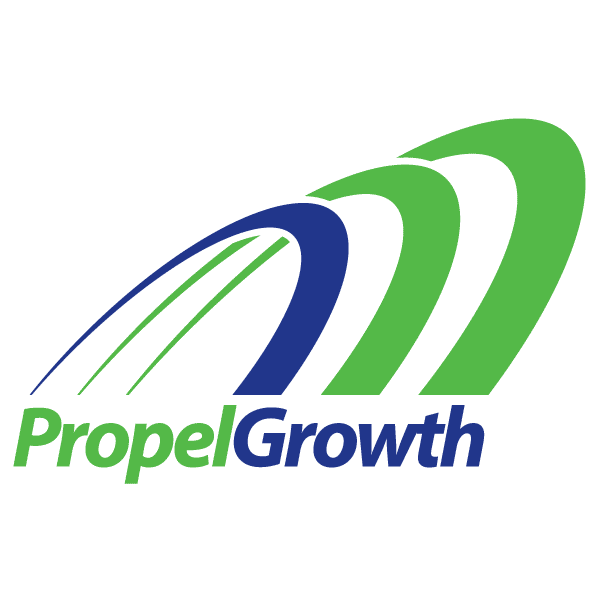![]()
![]()
It’s easy for B2B marketers to get excited about the wrong metrics when setting goals for B2B lead conversion rates. But what are the most important metrics to track? How do you know if your programs are succeeding?
For example, we might be thrilled at big volume spikes in website traffic, sharply increased lead conversion rates on offers, and large subscriber audiences on our blogs. We track activity and conversion analytics like views, unique visits, email opens and click through rates, subscriber growth rates and webinar attendance rates. But are we tracking the right metrics?
Earlier, I talked about the difficulty in measuring true influence when calculating the ROI on content marketing.
So what should we be measuring?
Start with the Sales Goals
We need to start with the sales objectives. What is the target market, and who is the target buyer committee? The more detailed you can be in that answer, the better. For example, in the financial services space, most technology companies have a very limited target audience of roughly 500 banks and brokerages. Within those firms, they might target 3-4 geographical areas (for the large firms), with 3-5 target buyer personas in each region (although if you read this article, you may decide you need more personas). So that’s roughly 5,000 to 7,500 people.
If that’s your target, then it would not be helpful to try and build up an audience of 50,000 blog subscribers.
Focus on Attracting the RIGHT Audience
In most cases where financial technology is being marketed, we find that very finely targeted content is more likely to generate real sales leads than less focused content. For example, one Buffalo Content Program we recently completed targeted 37 specific firms. We knew precisely what buyer personas we needed to attract, and we spent time interviewing a number of these specific people. Then we produced a year’s worth of content specifically targeted to them. We measured our effectiveness by how many people matching the target buyer persona criteria from the specific target firms were engaging with the content. Our goal was to get a cross-section of personas from all 37 firms engaged. Any other firms were gravy.
Focus on Converting the RIGHT Leads
Don’t get idealistic visions of attracting 1000’s of registrations. We’re here to support the sales process – not win a marketing award for generating the most leads. We’re not looking for huge volumes of Facebook likes, Google +1s or Twitter shares (those things only matter to the extent that the target audience sees them). We’re looking to persuade entire buying committees, and to build internal advocacy. The goal is revenue generating, customer-centric marketing, not ego-centric marketing.
Build an Engaged Audience
Buying processes within the fin-tech industry are generally long and rigorous. Rarely will a lead arrive at your registration page ready to buy. So it’s important to think about content as an ongoing proposition, drawing an audience of buyers into an ongoing narrative that compels them to come back for more. It’s about getting their consent and opt-in to participate in your ongoing narrative. That means you have to consistently generate content that buyers value in order to keep their interest. Email marketing is still one of the most effective tools for lead nurturing, but you have to defend your audience to preserve their opt-in and prevent over-communication that drives defection. Once you find the right balance, you’ll gain an engaged audience who over time will draw closer to your brand.
Renting vs. Owning Your Audience
There are a lot of platforms where you can find an audience. Social media platforms like LinkedIn, TabbFORUM, Wall Street & Technology, Futures and Options World and many other financial services publications accept contributed content. All of these methods help you attract an audience, but the publishers are all interested in keeping their audiences in their properties. At some point, they’re all going to change and evolve, reducing your reach and/or increasing the cost to reach their audience. For example, on LinkedIn, a year ago, every post we put on our company page generated at least 100-150 views. Now the average is down around 37 views. This is because LinkedIn is actively promoting its platform as a content repository; and the more content that’s available, the smaller number of people will see any one post. So now, we have to pay to promote a post in order to attract a larger audience. For now, that’s an effective strategy, but the cost impact is not insignificant. Building your own audience on your own digital property costs more at the beginning, but the long term value and ROI is substantially higher than the ROI of generating leads from a rented audience.
Content Shock
Mark Schaefer wrote a very provocative article on “Content Shock” earlier this year. There was a firestorm of response in the content marketing world, as he had portended the demise of our business models. But I happen to think he’s right in a way. And one way to delay the negative effects is to build your own, very targeted audience.
Measure the Right Signals
Make sure you’re measuring the right signals and tracking the right metrics. You’ll need a decent marketing automation platform to do this. I recommend that you measure content performance, audience performance, and business performance. Fine-tune your content against behavior – based on these signals (being careful not to interpret one white paper download as a buying signal that prompts an immediate sales call). Consider audience profile, topics, history, and preferences. Track your performance over time, and optimize against your goals.
How to Evaluate Lead Generation Performance
For example, we measure how our content is contributing to audience development aligned to our target personas. If we’re developing a large audience, but it’s not the right personas, then we need to adjust the content strategy. Likewise, we evaluate the effects of the content on the pipeline. If the leads generated in the content program are converting into qualified sales opportunities, then we’re on the right track. But if the leads don’t seem to be qualified, we need to figure out why and make adjustments. If the sales opportunities generated match our ideal customer, then we’re golden. But if the deal sizes are small, or the opportunities are outside the scope of what the product offering does without enhancement, then we need to adjust the messaging. We also look back at deals won and evaluate what kinds of content those prospects consumed during their buying journey. Then we work to create more of that kind of content.
Take the time to define crystal-clear goals and carefully strategize your content generation efforts around meaningful communication with an audience relevant to your bottom line.
. . . . . . . . . . . . . . . . . . . . . . . . . . . . . . . . . . . . . . . . . . . . . . . . . . . . .
If you’ve found this article to be helpful, here are some related blog posts:
B2B Lead Conversion — Qualification Matters
- 4 Steps to Optimize Your LinkedIn Profile for Sales Prospecting – February 12, 2021
- The Reality of Cold Calling for B2B Sales – January 11, 2021
- Can Inbound Marketing Generate Enough Leads? – January 9, 2021







2 responses to “B2B Lead Conversion Rates – Tracking the Right KPIs”
One of the main secrets with how to generate leads is making systematic tests on your campaign productivity. Use A/B testing to improve your landing page and increase the amount of targeted leads. To perform A/B or split testing, you ought to take two web pages that look similar, but differ in color, text placement, images, etc.
[…] Read the blog post, “B2B Lead Conversion Rates — Tracking The Right KPIs.” […]